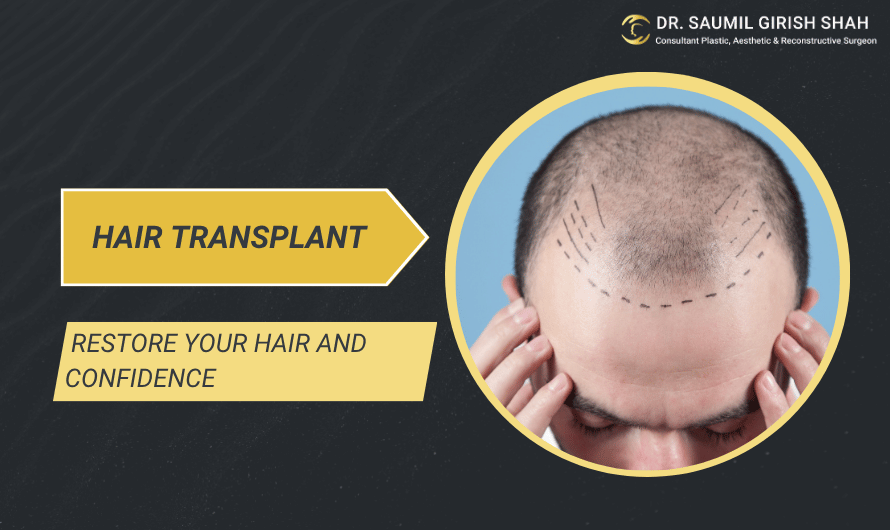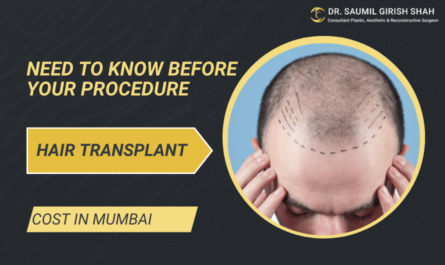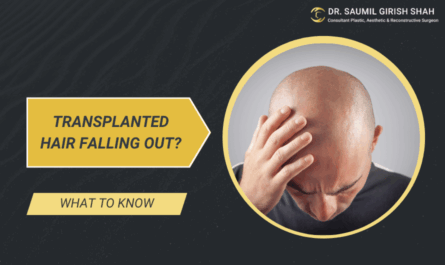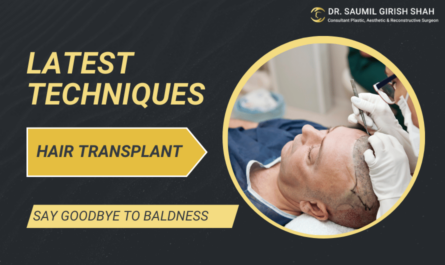Hair Transplant in Mumbai
Hair loss is a common concern for both men and women, affecting their confidence and self-esteem. As hair thinning or baldness becomes more prevalent due to various factors, many individuals are now seeking effective solutions. A hair transplant is one of the most successful and popular methods to restore lost hair and regain self-assurance.
In this blog, we will explore the basics of hair transplantation, the common causes of hair loss, the available treatment options, and how a skilled surgeon can make a significant difference in the outcomes of your procedure.
What is Hair Transplant?
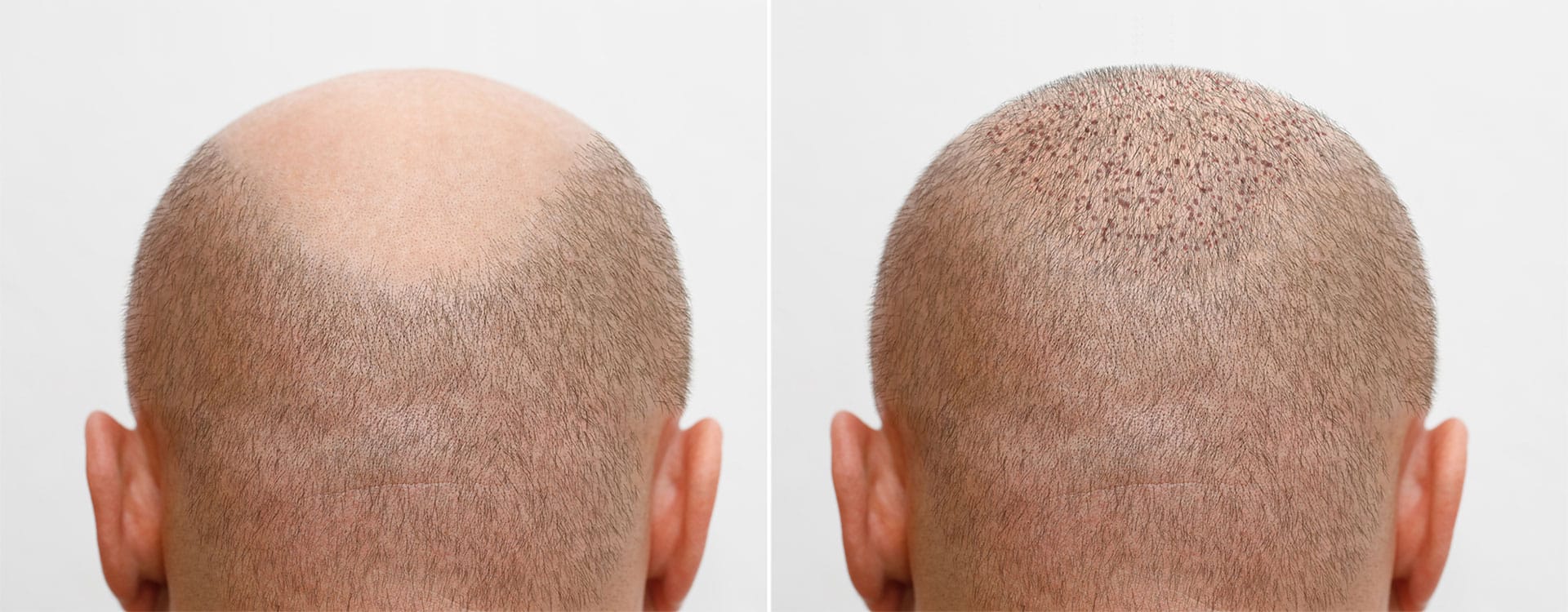
A hair transplant is a surgical procedure that involves removing hair follicles from one part of the body (usually the back or sides of the head) and transplanting them to areas experiencing hair loss. The most common technique used today is Follicular Unit Extraction (FUE), in which individual hair follicles are extracted and implanted into the thinning or bald areas.
Another method is Follicular Unit Transplantation (FUT), where a strip of skin with hair follicles is removed and divided into smaller grafts to be transplanted.
Both methods are minimally invasive, but FUE has gained popularity due to its natural results and faster recovery time.
Causes and Symptoms of Hair Loss
Understanding the root cause of your hair loss is essential for effective treatment. The causes of hair loss vary, but some of the most common include:
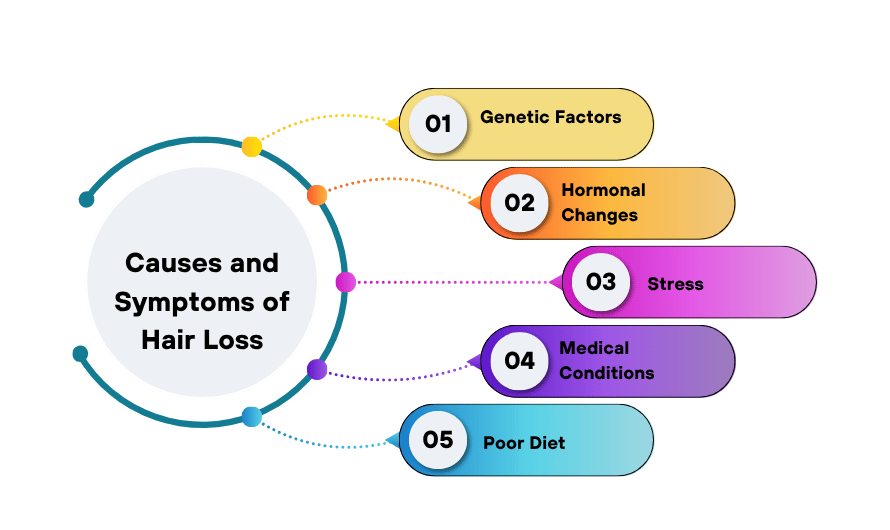
- Genetic Factors (Male and Female Pattern Baldness): This is the leading cause of hair loss in both men and women. Genetic predisposition leads to gradual thinning of hair, usually starting at the crown or temples.
- Hormonal Changes: Changes during pregnancy, menopause, or due to thyroid imbalances can lead to hair thinning or shedding.
- Stress: Physical or emotional stress can result in a temporary hair loss condition called telogen effluvium.
- Medical Conditions: Conditions like alopecia areata, lupus, or scalp infections can result in hair loss. Certain medications like chemotherapy can also cause hair shedding.
- Poor Diet: Deficiencies in essential nutrients like iron, zinc, and proteins can lead to hair thinning.
If you are noticing signs like excessive hair shedding, receding hairline, or bald patches, a hair transplant could be a solution to restore your hair growth and confidence.
Hair Transplant Treatment Options and Solutions
When you consult a doctor about hair restoration, they will evaluate your condition and recommend the best treatment method. Here are some treatment options:
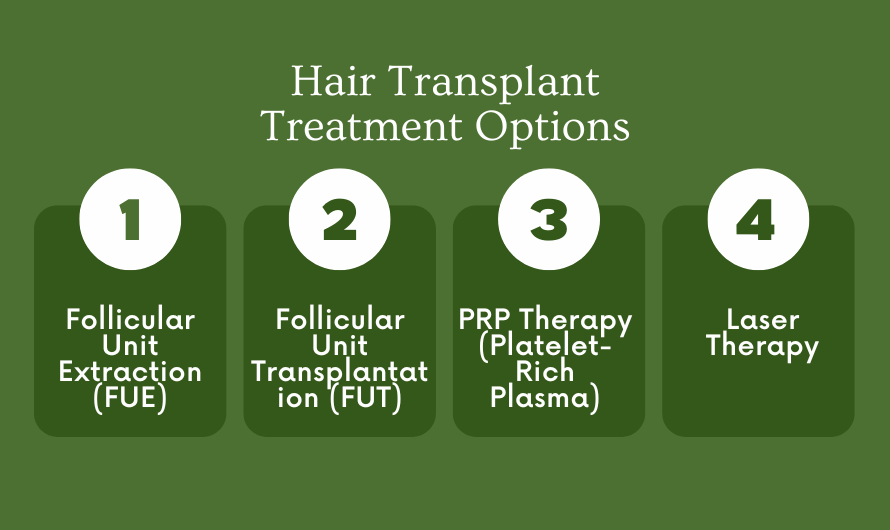
- Follicular Unit Extraction (FUE): As mentioned, FUE is a popular method due to its minimally invasive nature. Hair follicles are individually removed from the donor area and implanted into the recipient area. It leaves no noticeable scarring and has a faster recovery time.
- Follicular Unit Transplantation (FUT): FUT involves removing a strip of scalp and harvesting individual hair follicles from it. This method is more invasive than FUE but can be beneficial for those requiring a large number of grafts.
- PRP Therapy (Platelet-Rich Plasma): PRP is a non-surgical procedure where the patient’s own blood is processed to extract growth factors and then injected into the scalp. This helps stimulate hair growth and is often used as a complementary treatment to hair transplants.
- Laser Therapy: Low-level laser therapy (LLLT) helps promote hair growth and reduce hair thinning. It’s commonly used for mild hair loss or as an adjunct to other treatments.
Expert Insights on Hair Transplant
The success of your hair transplant depends largely on the skill and experience of the surgeon. Dr. Saumil Girish Shah, one of the best plastic surgeons in Mumbai, specializes in hair restoration surgeries, along with a variety of other aesthetic and reconstructive treatments. His expertise ensures that patients not only receive excellent technical results but also a natural, well-balanced appearance that enhances their facial aesthetics.
Dr. Saumil Girish Shah is a renowned plastic surgeon in Mumbai, specializing in both aesthetic and reconstructive surgery. Consultations with Dr. Shah is available at Skinzone Aesthetic. You can book an appointment by contacting the clinic directly or visiting their website.
FAQs (Frequently Asked Questions)
1. How long does a hair transplant procedure take?
A hair transplant usually takes 4-8 hours, depending on the number of grafts needed and the technique used. You may need to take breaks during the procedure.
2. Is the procedure painful?
Local anesthesia numbs the scalp, making the procedure generally painless.You may experience mild discomfort afterward, but you can manage it with over-the-counter pain medication.
3. How soon will I see results?
Hair transplants provide long-lasting results, but it can take up to 6-12 months to see the full results, as the transplanted hair needs time to grow.
4. Are the results permanent?
Yes, the transplanted hair follicles are taken from areas that are resistant to hair loss, so they should continue to grow for a lifetime.
5. Are there any side effects or risks?
Some risks include infection, scarring, or poor hair growth, but these are rare when performed by a skilled surgeon. Proper aftercare is essential for minimizing complications.
Conclusion
A hair transplant can be a life-changing solution for those suffering from hair loss. By understanding the procedure, its causes, and available treatment options, you can make an informed decision that restores not only your hair but also your confidence. With experienced surgeons like Dr. Saumil Girish Shah, you can be assured of safe, effective, and natural-looking results.
If you’re considering a hair transplant, don’t hesitate to reach out to Dr. Shah for a consultation. A fuller head of hair awaits you!

